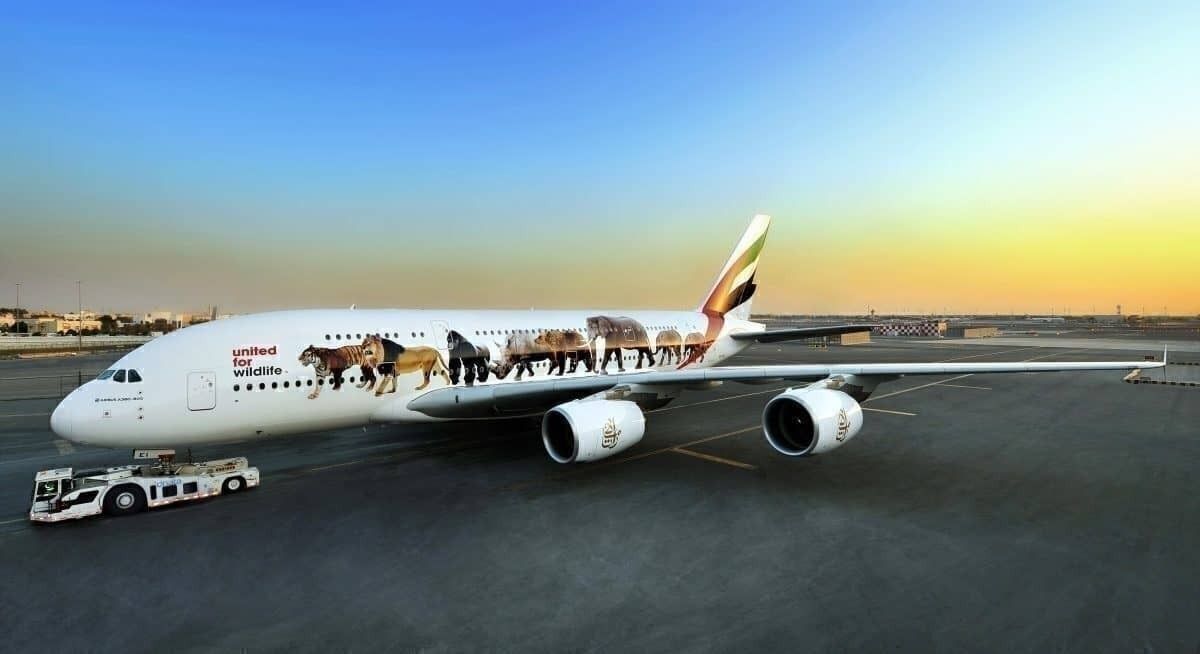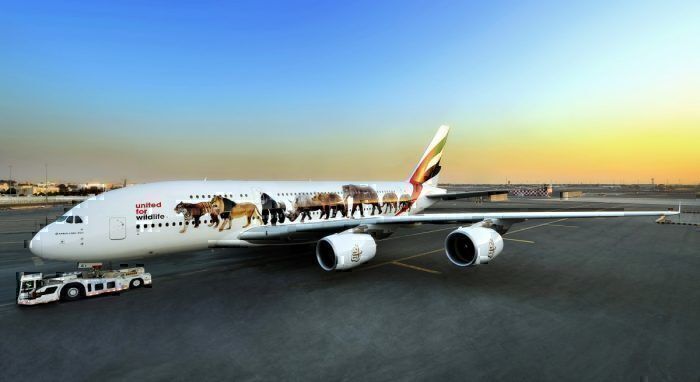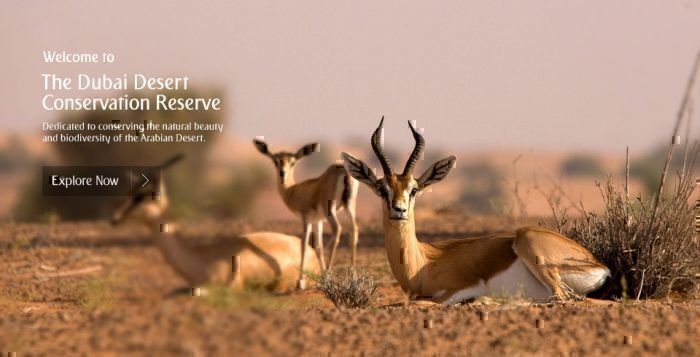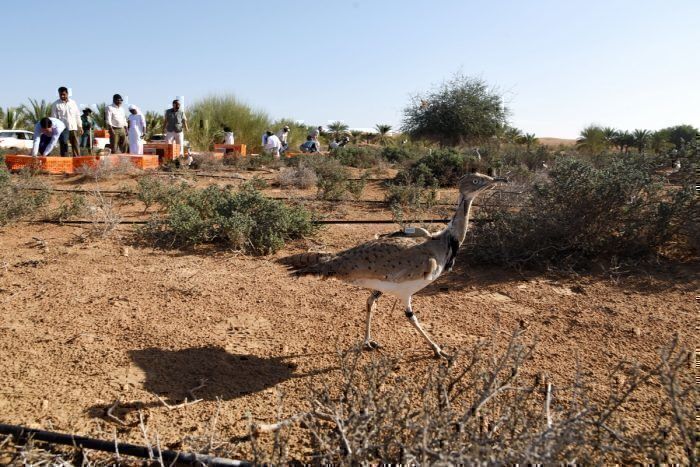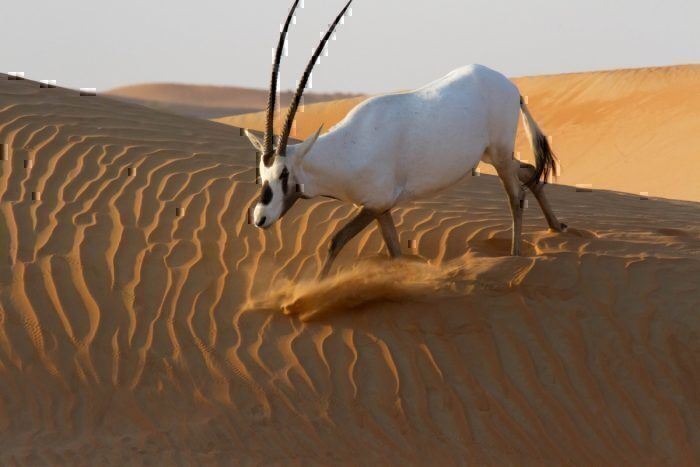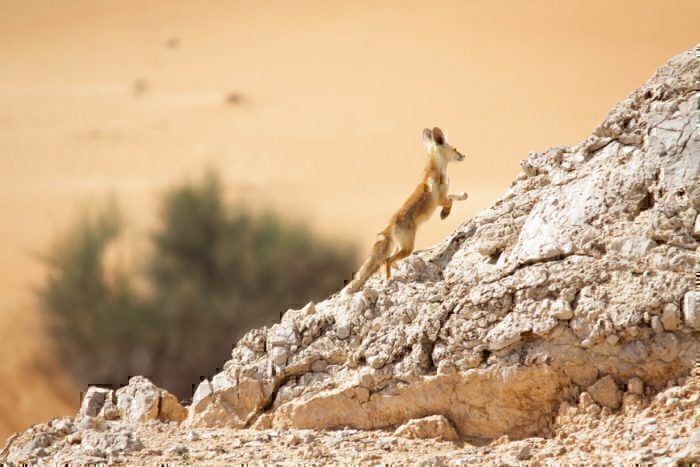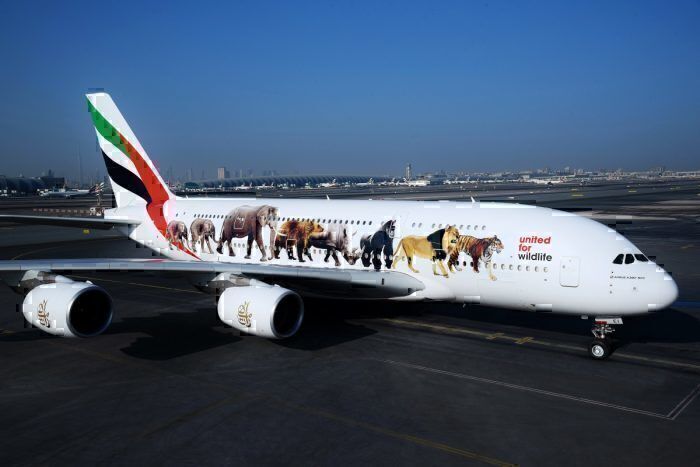While working on an article about Emirates' financial performance, I was amazed by the airline's financial statement. The majority of the photos and graphics are not aviation-oriented, but rather are dominated by photos of wildlife, aimed at promoting wildlife preservation. It is great to see such action being undertaken by Emirates, which led me to contact the airline about the matter. I had a few questions in mind and, after being provided with the answers, I found them extremely interesting and worth sharing.
The interview
Simple Flying: In a business with very small profit margins, we are delighted to see an airline putting such emphasis on wildlife preservation. Where did this unique the idea originate from?
Emirates: Sustainability and the environmental future of the planet are issues that are important for Emirates, and we are deeply aware of our position in the industry to advocate for change and influence stakeholders about the serious damage being done to our ecosystems and the creatures that inhabit them. Today, there are thousands of endangered species, many nearing extinction, and we all have a role to play in protecting our fragile planet.
We take our environmental responsibilities seriously and have been championing wildlife conservation and protecting local habitats since 2003, when we began funding the operations of the 225 square kilometre Dubai Desert Conservation Reserve (DDCR). This is the largest piece of land that Dubai has dedicated to a single project and aims to preserve Dubai’s unique desert environment for future generations. In Australia, Emirates has been supporting the protection of extraordinary wildlife and plant life for over 10 years, through the conservation-based Emirates One&Only Wolgan Valley in New South Wales.
We are also vigilant when it comes to wildlife trafficking and have trained our employees to identify and look out for warning signs of smuggled wildlife products during cargo transportation and screening. Emirates will not carry banned species, hunting trophies or any products associated with illegal wildlife activities.
We have also raised awareness around the illegal trafficking of endangered wildlife, by emblazoning five A380s with special wildlife decals, taking this important message around the world and spurring conversation around wildlife preservation.
SF: Emirates established DDCR to protect wildlife, what are its main successes and what effect did it have on the endangered species in UAE?
EM: The Dubai Desert Conservation Reserve illustrates Emirates’ long-standing focus on protecting fragile ecosystems and support for sustainable tourism in Dubai. The DDCR plays an important role in ecological research, actively collaborating with both local and international universities. The findings and results of the research studies help to enhance knowledge of the desert ecosystem, gather scientific data around rare and endangered desert species, monitor its balance and preserve its natural environment.
The reserve is also a focal point for conservation programs aimed at restoring populations of some of the UAE’s wildlife, such as the Arabian gazelle, sand gazelle and Arabian oryx. For example, since their reintroduction into the DDCR, the antelope species have thrived, and their populations have significantly increased, triggering the process of looking into relocating some oryx and gazelle species to other protected areas within the region. Another successful population restoration project includes 250 endangered Macqueen’s bustard (houbara) that were released with 25 of them fitted with tracking devices to monitor their movement and breeding progress.
In 2018, the DDCR was visited by more than 285,000 tourists, through Arabian Adventures, various Emirates partner tour operators, and the Al Maha Desert Resort.
SF: Can you foresee cooperation with other airlines on the topic of wildlife preservation, possibly a form of a new airline alliance for wildlife preservation?
EM: We have no immediate plans to form an alliance for wildlife preservation, however, Emirates has continued its strong support for actions and organizations whose mission is to stem the illegal trade in wildlife and wildlife products. In 2018, the Emirates Group signed the Buenos Aires Declaration on Travel and Tourism and Illegal Wildlife Trade, an effort led by the World Travel & Tourism Council (WTTC) to reach a billion travellers with messages to fight the illegal wildlife trade and work with communities to develop sustainable tourism that provides livelihoods and protects wildlife. The WTTC and World Wildlife Fund are developing guidelines to eliminate illegal wildlife trafficking from the travel and tourism supply chains.
In 2015, Emirates became a partner of ROUTES (Reducing Opportunities for Unlawful Transport of Endangered Species), and we also announced our support for United for Wildlife, an initiative spearheaded by the Duke of Cambridge and the Royal Foundation, to tackle the illegal wildlife trade chain. Emirates is also one of the founding signatories of the 2016 Buckingham Palace Declaration which commits to taking steps to shut down routes exploited by illegal wildlife traffickers and remove the vulnerabilities in transportation and customs.
SF: Are there any other environmentally friendly innovations being implemented by Emirates? Is Emirates aiming to reduce its plastic waste and limit the CO2 emissions? Are there any targets in place?
EM: We are committed to taking progressive steps forward in our sustainable journey. Investment in efficient aircraft and smarter flying techniques that minimize fuel consumption across our fleet demonstrates our proactive leadership in environmentally efficient air travel. We only operate a passenger fleet of Airbus A380s and Boeing 777s, and together with our Boeing 777 freighters, the average fleet age stands at 5.6 years, well below the industry average. A modern widebody fleet delivers lower engine and noise emissions, helping us advance our objective of reducing our carbon footprint. We also work closely with air traffic management authorities from around the world to implement best practices in flight operations to help reduce fuel burn.
We also recently made a network-wide commitment to reduce single-use plastics on onboard our aircraft, and have introduced eco-friendly paper straws. By the end of the year, we will also be replacing plastic swizzle sticks, stirrers, and plastic bags for Inflight retail purchases with eco-friendly alternatives, and these initiatives will remove over 81 million single-use plastic items from landfills each year. This is just the beginning, and we are trialing other initiatives and taking onboard Cabin Crew team suggestions for environmentally friendly ideas. For instance, we have been segregating large plastic bottles onboard that get recycled in Dubai and the rest of our network.
In 2017, we introduced sustainably-made blankets to our Economy Class passengers on long-haul flights. Each blanket is made from 28 recycled plastic bottles, which would have otherwise ended up in a landfill. Through these initiatives and amongst others, Emirates will continue to improve sustainability across our supply chain as well as all aspects of our operations.
In addition to emissions and waste reduction initiatives, we also implement other environmental projects such as installing solar panels on some of our facilities to supplement energy requirements, recycling in our offices, and a range of employee awareness campaigns.
SF: It was very interesting to see your 2018-19 results document focused on the issue of wildlife preservation, could you explain the reason behind this decision?
EM: As a leader in the aviation industry, we know that environmental responsibility is core to our long term business success. Safeguarding wildlife and protecting natural ecosystems became a central theme to our annual report to highlight the work that is being done across the business to stop illegal trade and uphold global agreements within transport and tourism and help raise awareness around the devastating effects to the environment, and help rebuild balanced ecosystems for future generations to come.
SF: We are pleased to see five A380's carrying liveries promoting wildlife preservation, have you seen any positive reaction from the passengers/public regarding the liveries?
EM: Yes. Our five A380s feature animals threatened by poaching, and they have helped raise awareness among the millions of passengers we carry every year across our network. Onboard, we are also engaging our customers in the discussion by featuring interviews with conservation experts, wildlife programs and films on our inflight entertainment system, ice.
SF: What does the future 'ideal' earth look like for Emirates? How will you help to achieve that?
EM: The actions we take today – as individuals, companies, communities and countries will determine how the earth is preserved and remains habitable for generations to come. Whether it’s through wildlife conservation, taking an active role in curbing climate change through reduced emissions or reducing our plastic consumption, there is much work ahead to mitigate our environmental impact be a positive force for change.
Simple Flying thank Emirates for their in-depth interview and wish them all the best with their future environmental programs. What is your take on such a policy? Would you like to see other airlines starting similar programs?

